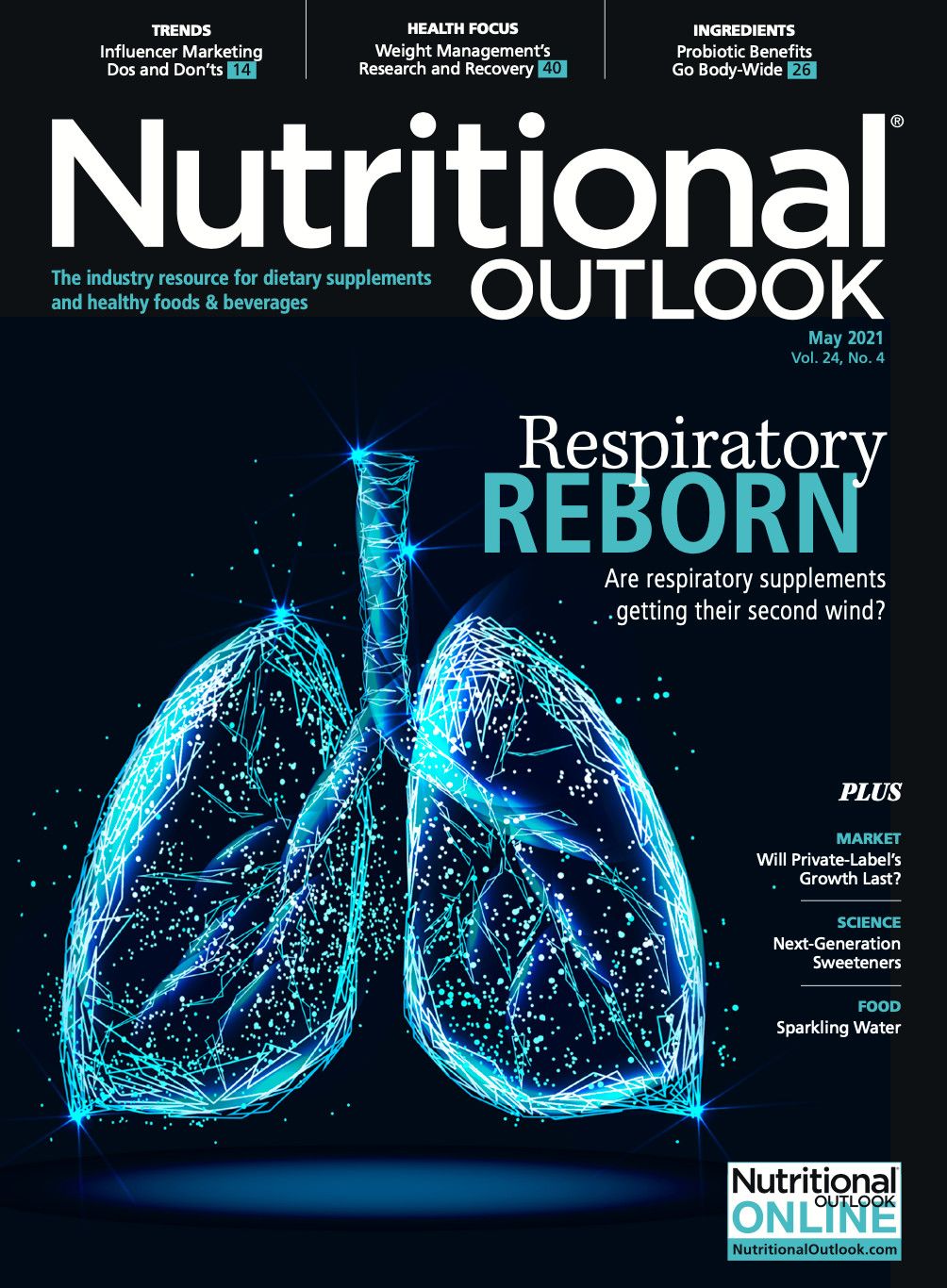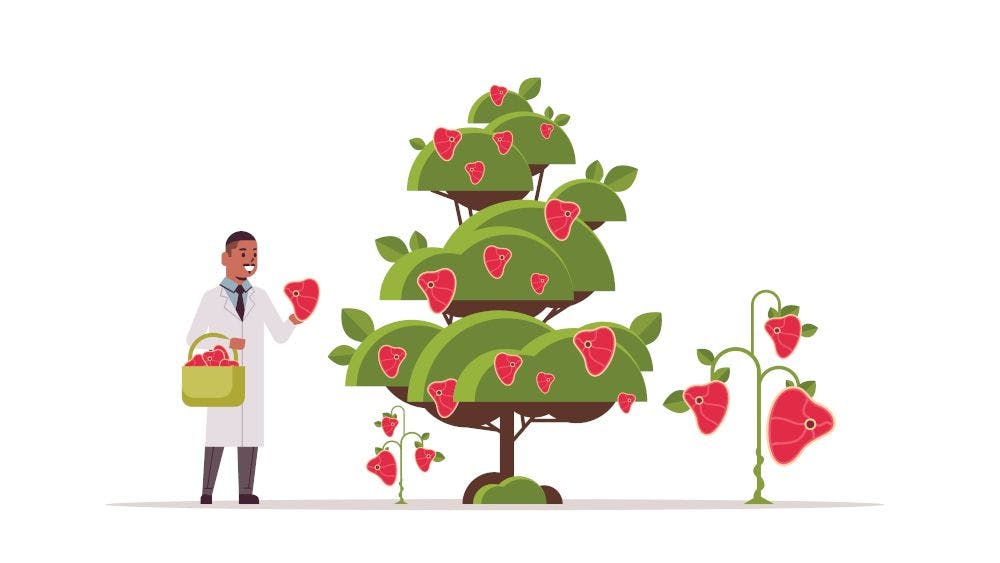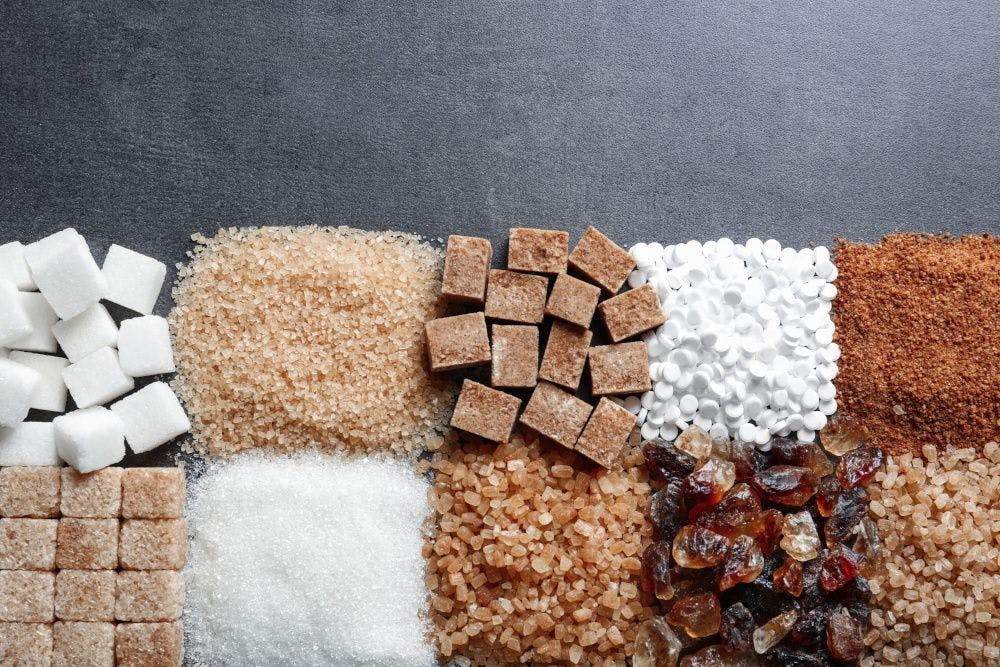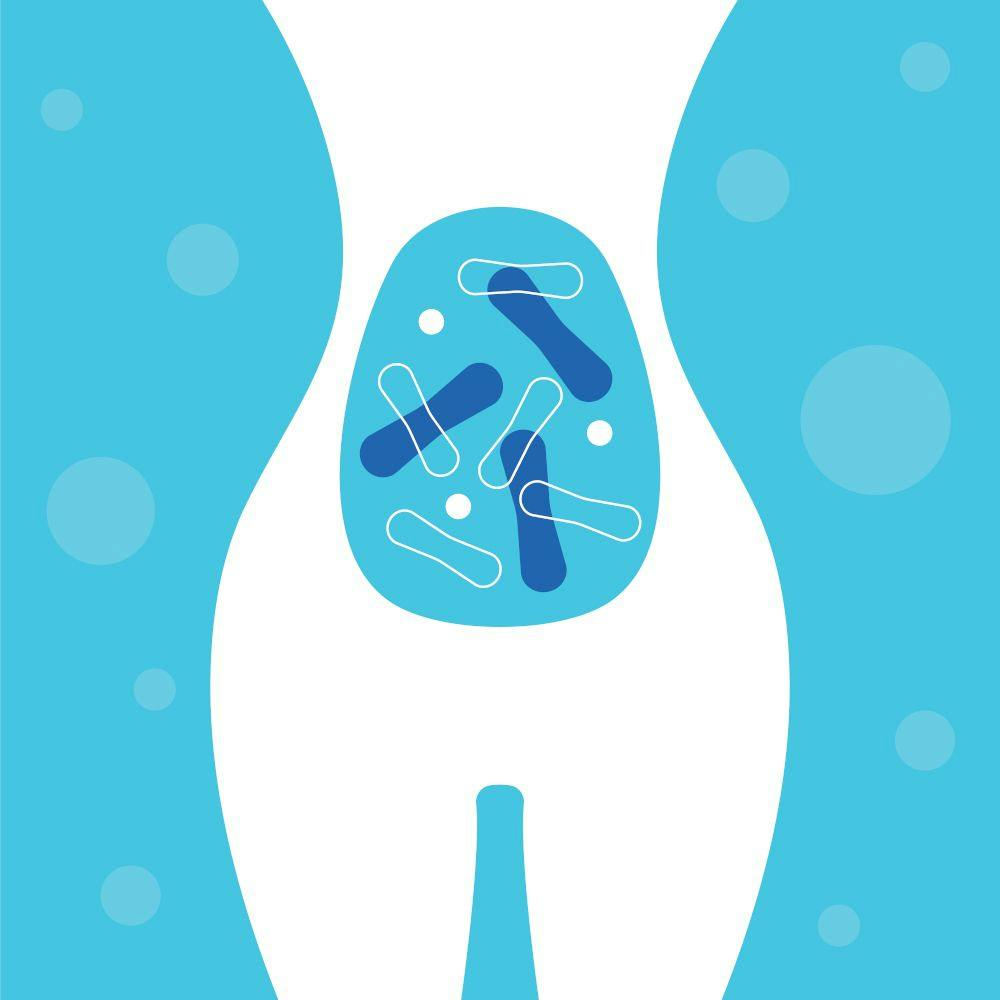Can supplement manufacturers and their research convince men to take control of their health?
Consumers can be shortsighted—particularly men who may choose to live life with a macho “carpe diem” attitude that is also cavalier about their own mortality.
Photo © Yossarian6 - Stock.adobe.com

The classic stereotype of the aging man is the mid-life crisis: he attempts to relive his youth and changes his behavior drastically—becomes restless, obsesses over his appearance, buys a faster car. And while this psychological reaction to the anxiety of getting older has become cliché, the fact is that there are real physiological struggles men can go through as they age that can indeed diminish their quality of life.
Luckily, there are supportive products on the market that can help men handle the bodily pangs of aging. And with that, we can flip the topic instead to one of “mid-life revolution,” in which, with the right lifestyle changes and nutritional support, men can head gracefully, and contentedly, into the years ahead.
Maintaining Vigor
When researching men’s health and healthy-aging products, one will find a good deal of overlap with sports nutrition products. That is because energy, muscle health, and physical conditioning are important for men of all ages.
“Men’s health issues center around energy, vitality, strength, and cardiovascular health. These are very consistent with sports nutrition endpoints and can be improved by the same nutritional compounds,” says Sara Perez Ojalvo, director of research and development for Nutrition21 (Harrison, NY). Two ingredients which Nutrition21 markets for both sports nutrition and men’s health are Nitrosigine and Velositol.
“Nitrosigine contains a highly bioavailable form of arginine and has been clinically shown to significantly increase nitric oxide levels and blood flow, which not only leads to increased muscle pump but also improved cardiovascular endpoints. Nitrosigine also increases perceived energy without negatively affecting heart rate or blood pressure as a non-stimulant source of energy and vitality,” explains Ojalvo. “Velositol is Nutrition21’s perfect partner to protein powders as it significantly increases muscle protein synthesis—how our bodies build muscle—when added to protein and exercise.” She says that a new outcomes study showed that Velositol significantly increase strength, muscle endurance, and muscle power more so than protein and exercise alone.1
The reason men experience declines in energy and muscle as they age is because of testosterone loss.
“Starting in one’s mid-30s, testosterone production begins to wane, and depending on the individual male, noticeable effects include flagging energy, easier weight gain, and more difficulty in losing weight/fat,” explains Annie Eng, CEO of HP Ingredients (Bradenton, FL). She notes that healthy men will typically see a 1% drop in testosterone each year starting at around age 40. For comparison: young men typically have testosterone levels of approximately 1,000 ng/dl, while the average level for an 80-year-old man is about 200 ng/dl.
Symptoms related to age-related testosterone loss include lethargy, loss of vitality, sexual dysfunction, and loss of muscle mass and strength, says Paul Clayton, PhD, chief scientific advisor at Gencor (Austin, TX). While it’s not uncommon for men to experience these symptoms, they can be rather disheartening.
Fortunately, there is medical treatment to help, called testosterone replacement therapy (TRT), but an estimated 87% of men with low testosterone unfortunately do not receive this therapy.2 Despite the use of TRT nearly tripling between 2001 and 2011, making it one of the fastest-growing pharmaceutical product categories, in more recent years the use of testosterone treatment significantly declined between 2013 and 2016.3
While reasons for TRT’s decline are not entirely clear, one possible reason may be the U.S. FDA attributing a potential increase of cardiovascular risk to TRT, with concerns compounded by fears that testosterone therapy may also increase prostate cancer risk. Socioeconomic factors may also play a role, as reimbursement and insurance practices for covering low-testosterone interventions are not often clear, therefore hindering patients from receiving appropriate treatment.
Put all this together, and the fact is that many men are now seeking alternative solutions for their low-testosterone symptoms.
Unfortunately, the demand also creates an opportunity for unscrupulous manufacturers to take advantage of vulnerable consumers. For example, one study evaluated the composition of 50 dietary supplements researchers found through Google using the search term “testosterone booster.” Ninety percent of the supplements made claims to boost testosterone, but only 24% had data to support their claims, while 10.1% of the products even contained ingredients with data suggesting a negative effect on testosterone.2
No supplement has the authority to make claims to treat or prevent diseases, but certain ingredients have been shown in clinical research to support healthy testosterone levels in men.
Many men’s health ingredients on the market draw from the same ingredient source, but as the companies interviewed in this story explain, some proprietary extracts will have greater efficacy. Fenugreek extract is one example.
“Plain ol’ fenugreek won’t do much,” explains Clayton. “If you have a standardized fenugreek like our Testofen, standardized for a specific matrix of furostanol saponins, however, this will do two things: firstly, the Fenusides”—Gencor’s brand name for its saponin glycosides—“displace testosterone from sex hormone–binding globulin (SHBG), thus raising levels of free (active) testosterone in the blood. Secondly, they slow down the action of 5-alpha reductase, thereby reducing the breakdown of testosterone.”
In one randomized controlled trial published in The Aging Male, 120 healthy men between the ages of 43 and 70 were given either placebo or 600 mg/day of Testofen for 2 weeks.4 The primary outcome measured was the score change based on the Aging Males’ Symptoms (AMS) questionnaire, which measures possible androgen deficiency symptoms. The secondary outcomes were sexual function and serum testosterone. Results showed that subjects taking Testofen had a significant decrease in AMS scores over time compared to placebo. The treatment group also saw a significant improvement in sexual function as well as a small but significant increase in serum testosterone, compared to placebo.
The ingredient’s benefits extend beyond symptoms of low testosterone to supporting muscle mass and strength. In a study published in Translational Sports Medicine, 138 male subjects between the age of 25 and 47 years were given either 1) placebo, 2) 300 mg/day of Testofen, or 3) 600 mg/day of Testofen, for eight weeks.5 Researchers measured muscle strength and endurance, functional threshold power, body composition, and sex hormones at baseline, week 4, and week 8. Results showed that while all subjects saw improvements in maximal leg presses, the Testofen-treated groups saw greater improvements compared to placebo. Subjects taking 600 mg of Testofen saw decreases in body mass of 1.2 kg, a 1.4% decrease in body fat, and an increase in lean mass by 1.8% at 8 weeks. This same group also saw increases in testosterone concentrations compared to baseline at 8 weeks.
Another ingredient associated with supporting testosterone levels and physical fitness is Eurycoma longifolia, known as tongkat ali. Like fenugreek, tongkat ali can pervade many different men’s health products, but not all ingredients are created equal. Standardized extracts supported by research offer more transparency and efficacy to the end consumer. For example, HP Ingredients’ tongkat ali extract, LJ100, is well supported by research.
“Studies on humans show that LJ100 supplementation aids in creating a favorable anabolic state (building up) while suppressing catabolic state (breaking down). This enhances performance,” says Eng. She says that, in tandem with exercise, LJ100 supplementation has been shown to increase fat free mass and decrease body fat in subjects, and increase muscle strength and size as well as endurance. “These desired benefits appear to stem from LJ100’s ability to encourage endogenous testosterone production,” she adds.
In one double-blind, placebo-controlled study published in Evidence-Based Complementary and Alternative Medicine, 109 men between the ages of 30 and 55 years were given either 300 mg of LJ100 or placebo for 12 weeks.6 The primary endpoints researchers investigated were quality of life (investigated by the SF-36 questionnaire) and sexual well-being (measured by the International Index of Erectile Function (IIEF) and Sexual Health Questionnaires (SHQ)). Results showed that subjects taking LJ100 saw significant improvements in several domains of the SF-36 questionnaire compared to placebo after 12 weeks. This includes the “physical functioning” (moderate and vigorous activities such as climbing, bending and kneeling, walking, and bathing/dressing) and “vitality” domains. Subjects taking LJ100 also experienced significant improvement in erectile function.
When it comes to physical fitness, tongkat ali may have a significant impact on endurance. For example, a study published in the Journal of the International Society of Sports Nutrition found that supplementation with LJ100 reduced cortisol levels and helped maintain high testosterone levels in cyclists.7 In the study, 30 men were given either placebo or 100 mg of LJ100 30 minutes prior to completing four 15-mile laps during a 24-hour mountain biking event. Results showed that subjects taking the extract had 32.3% lower levels of cortisol and 16.4% higher levels of testosterone, compared to placebo. This helped improve the anabolic state of cyclists during the event.
Metabolic Health and ED
Major contributing factors to problems such as erectile dysfunction (ED) include metabolic conditions such as diabetes and cardiovascular disease, both of which can contribute to poor blood circulation.
“Erectile dysfunction is very common and impacts about 50% of men over the age of 40,” explains Franziska Weichmann, manager of scientific communications and product development at Horphag Research (Hoboken, NJ). “Men can develop ED at any age, but it is more common as men age. Older men are more likely to develop health conditions such as stress, anxiety, heart disease, and hypertension that are underlying contributors for ED. ED often correlates with other health issues, including stress and lack of sleep, and may be an indicator of a serious underlying condition such as hypertension and diabetes.”
According to Weichmann, Horphag’s French maritime pine bark extract, Pycnogenol, has consistently demonstrated in clinical research to have antioxidant and anti-inflammatory properties as well as the ability to promote nitric oxide production and improve blood circulation. In a recent study published in Bratislava Medical Journal, supplementation with Pycnogenol significantly increased erectile function in subjects with type 2 diabetes.8 Subjects without diabetes saw a significant increase in erectile function by 22% after three weeks of supplementation with Pycnogenol, but subjects with diabetes saw a 45% increase in erectile function as well as a 20% reduction in total cholesterol, a 21% reduction in LDL-cholesterol, and a 22% reduction in glycemia.
While supplements such as Pycnogenol and Nitrosigine may help manage symptoms such as ED, as they relate to poor blood flow from metabolic diseases, it’s important to emphasize that with a healthy diet and exercise, the risk of cardiovascular disease and diabetes can be significantly reduced. This not only reduces one’s risk of death but also improves one’s quality of life—the major irony being that perhaps more men would take their health seriously from an early age if they knew it could lead to ED later in life.
Enlarged Prostate
A common but insidious condition that men experience is benign prostatic hyperplasia (BPH), which is an enlarged prostate. An enlarged prostate can inhibit the flow of urine through the urethra, which can lead to frequent urination, difficulty urinating, and difficulty fully emptying the bladder. Unfortunately, these symptoms can impact many aspects of one’s quality of life.
“Many men with enlarged prostate experience the need to wake up frequently at night to urinate, and this disrupts a good night’s sleep and can lead to chronic fatigue,” explains Weichmann.
“Poor prostate health can also impact day-to-day life, such as engaging in social functions or attending special events when lack of urinary flow and control requires a man to gauge his comfort level based on proximity to a bathroom,” adds Margaret H. Dohnalek, PhD, chief science officer at Valensa (Eustis, FL). Chronic fatigue associated with BPH can also impact work performance, and for married men, the constant nighttime trips to the bathroom have the potential to create strain in their marriage.
Drug therapies do exist to treat BPH, but for those who want to explore natural options before pharmaceutical solutions, which can have side effects such as sexual dysfunction, there are a few options. One herb that is commonly associated with supporting prostate health is saw palmetto.
“A high-quality, standardized lipid extract of saw palmetto, known as a lipidosterolic extract, has been shown to address key functional mechanisms associated with urinary flow and control, and support urinary and prostate health,” explains Dohnalek. “A lipidosterolic extract has important fatty acids that are preferentially taken up by prostate cells and influence biological processes that are the root cause associated with prostate enlargement. In addition, the fatty acids in a standardized lipidosterolic extract of saw palmetto also can influence inflammatory processes in the bladder and prostate, which is also an important mechanism associated with lower urinary tract symptoms.”
Emphasizing the importance of standardization, Dohnalek notes that in order for these fatty acids to play a role in supporting lower urinary tract symptoms, they need to be present in a certain ratio and taken at the clinically effective dose. “A standardized lipidosterolic extract of saw palmetto that meets the ‘fingerprint’ of authenticity for fatty acids and phytonutrients is the only saw palmetto prostate health product that has been shown to support men’s urinary and prostate health,” she explains.
A potential bonus benefit to saw palmetto supplementation may be hair health, which can be of particular interest to aging men.
“Clinical research has shown a role for saw palmetto in a common form of hair loss that is seen in both men and women: androgenic alopecia. This is an important area of science where the role of a standardized saw palmetto extract can address another important quality-of-life factor: hair loss and hair thinning,” says Dohnalek. “Unlike prostate enlargement that typically is seen in men 50 years of age and older, androgenic alopecia can affect young men and women, so the lifetime implications associated with how we view ourselves in younger years is an important emerging role for a standardized lipid extract of saw palmetto in the beauty-from-within category.”
Recently, the French maritime pine bark extract Pycnogenol has also been shown to support prostate health. A study published in Medica Minerva found that supplementation with the extract at a dose of 150 mg/day for 8 weeks by subjects with initial BPH symptoms was associated with significant improvements in BPH symptoms.9 More specifically, subjects saw a 51% reduction in residual bladder volume, a 42% improvement in bladder emptying, a 37% reduction in urination frequency, a 31% improvement in urinary straining, and a 24% improvement in weak flow.
Big Picture
The common theme for this article is “quality of life.” Good health means good quality of life, and that sometimes gets lost in translation when talking about health, nutrition, and supplementation. Consumers can be shortsighted—particularly men who may choose to live life with a macho “carpe diem” attitude that is also cavalier about their own mortality. However, if they understood that certain decisions they make can negatively impact their ability to live life to the fullest later in life, it may change their tune. This is particularly true when it comes to topics such as ED.
For younger consumers, good health decisions may also be shortsighted and driven by vanity. Therefore, it may be useful for finished-product manufacturers to communicate the long-term benefits of good heart and blood sugar health outside of mortality. For example, Clayton explains that risk factors of prematurely falling testosterone include obesity, chronic stress, alcohol abuse, poor diet, and physical inactivity. All these risk factors are modifiable.
Among older consumers already experiencing symptoms of low testosterone and an enlarged prostate, the benefits of supplementation will take less convincing—but with the many products making claims related to testosterone and sexual health, it’s important to differentiate oneself without making irresponsible claims. The use of standardized extracts backed by clinical research is an important step in the right direction. These ingredients have established safety and efficacy that instill confidence in the consumer and, more importantly, the healthcare professionals they are consulting.
References
- Proceedings of the Seventeenth International Society of Sports Nutrition (ISSN) Conference and Expo. Journal of the International Society of Sports Nutrition, vol. 17 (2020): 59
- Clemesha CG et al. “‘Testosterone boosting’ supplements composition and claims are not supported by the academic literature.” The World Journal of Men’s Health, vol. 38, no. 1 (2020): 115-122
- Balasubramanian A et al. “Testosterone imposters: An analysis of popular online testosterone boosting supplements.” The Journal of Sexual Medicine, vol. 16, no. 2 (2019): 203-212
- Rao A et al. “Testofen, a specialised Trigonella foenum-graecum seed extract reduces age-related symptoms of androgen decrease, increases testosterone levels and improves sexual function in healthy aging males in a double-blind randomised clinical study.” The Aging Male, vol. 19, no. 2 (2016): 134-142
- Rao AJ et al. “Testofen® (fenugreek extract) increases strength and muscle mass compared to placebo in response to calisthenics. A randomized control trial.” Translational Sports Medicine. Published online ahead of print March 10, 2020.
- Ismail SH et al. “Randomized clinical trial on use of LJ100/PHYSTA freeze-dried water extract of Eurycoma longifolia for the improvement of quality of life and sexual well-being in men.” Evidence-Based Complementary and Alternative Medicine. Published online ahead of print November 1, 2012.
- Talbott J et al. “Effect of Eurycoma longifolia extract on anabolic balance during endurance exercise [abstract].” Journal of the International Society of Sports Nutrition, vol. 3, no. 1 (2006): S32
- Trebaticky B et al. “Natural polyphenols improve erectile function and lipid profile in patients suffering from erectile dysfunction.” Bratislava Medical Journal, vol. 120, no. 12 (2019): 941-944
- Ledda A et al. “Benign prostatic hypertrophy: Pycnogenol® supplementation improves prostate symptoms and residual bladder volume.” Minerva Medica, vol. 109, no. 4 (2018): 280-284


.png&w=3840&q=75)

.png&w=3840&q=75)



.png&w=3840&q=75)



.png&w=3840&q=75)



















